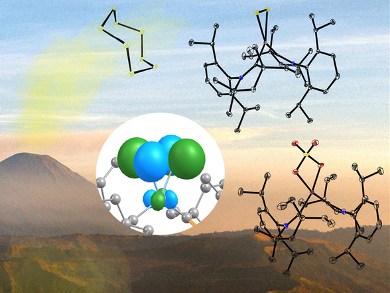Sulfur-containing metal complexes are relevant in both biological and industrial processes. PtS2 has been known since the early 1800s and has potential for semiconductor applications. The inherent bridging ability of sulfur as a ligand has been overcome with monomeric transition metal S2 complexes, which also have been successfully oxidized to S2O– or S2O2–containing variants. Platinum analogues of such oxidations have not been known previously.
Herbert W. Roesky and Dietmar Stalke, University of Göttingen, Germany, Debasis Koley, Indian Institute of Science Education and Research (IISER), Kolkata, Mohanpur, India, and colleagues have synthesized, isolated, and characterized the cyclic alkyl amino carbene (cAAC)-stabilized monomeric platinum(II) disulfide [(cAAC)2Pt(S2)] (1) and the partially oxidized product [(cAAC)2Pt(SO4)x(S2)1–x] (2).
The monomeric complex 1 was produced by a reaction of elemental sulfur with dicoordinate (cAAC)2Pt. Exposure of complex 1 to air over seven days produced oxidized complex 2. Complex 2 was generated by way of the intermediate [(cAAC)2Pt(O2)], confirmed and characterized by theoretical studies, NMR spectroscopy, and mass spectrometry. X-ray crystal analysis confirmed the structures of compounds 1 and 2, and density functional theory (DFT) calculations were used to investigate their reactivity and the interactions in the Pt–S and Pt–O bonds.
- Activation of Elemental Sulfur at a Two-Coordinate Platinum(0) Center,
Sudipta Roy, Christian J. Schürmann, Totan Mondal, Debasis Koley, Regine Herbst-Irmer, Dietmar Stalke, Herbert W. Roesky,
Chem. Eur. J. 2016.
DOI: 10.1002/chem.201603030




